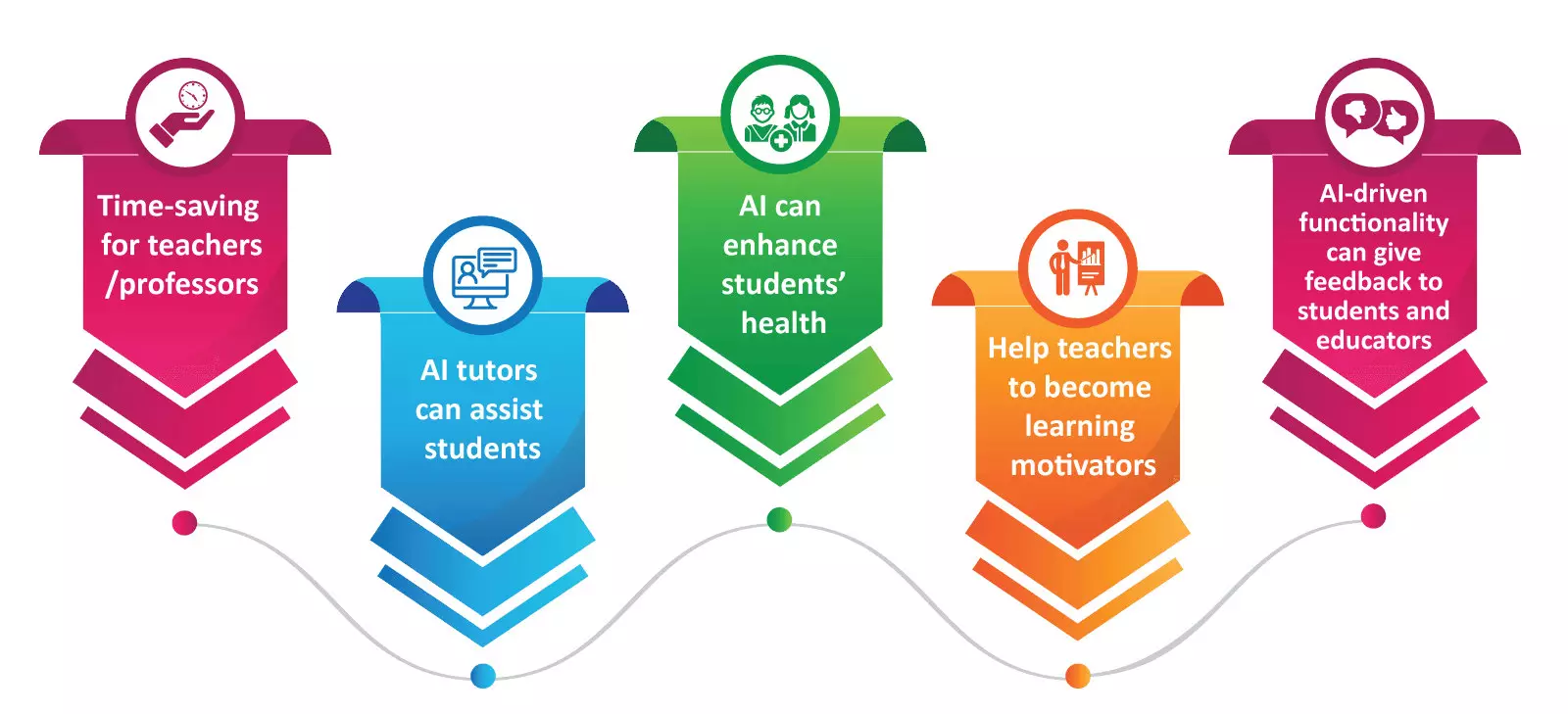How AI and Education Intersect
Students from all around the world had to switch from traditional in-classroom learning to online learning using new technologies during the pandemic. According to E-learning statistics, the growth rate witnessed an increase of 92% due to the COVID-19 pandemic in 2020. This reflects the existing trend of the increasing use of technology in our educational system. AI makes us rethink our whole education system and how it is delivered.
What is AI and How is it Used in Education

AI is defined as “the theory and development of computer systems able to perform tasks normally requiring human intelligence.” The most basic form of AI is Natural Language Processing (NLP), classified under machine learning (ML). This is the most common type of AI, and we use it in our daily lives unknowingly. The most famous example is virtual assistants.
Below are different ways which AI can influence educational institutions and shape the future.
Personalized Education
The current educational system relies on a one-size-fits-all model, but no two people have the same skillset. Educational institutions can now use AI to develop unique algorithms that suit a particular student considering their requirements.
AI can provide a more individualized learning experience and create lesson plans to teach each student effectively. It can also comprehend how a student is learning. AI can identify places where students are struggling and offer them alternate learning strategies. The AI algorithm analyzes the learning behavior of students and adapts the course contents to support each student.
Task Automation
Some people think that AI will make teachers obsolete, but this is not the case. AI can help teachers outsource some mundane administrative tasks such as grading. Grading AI tools such as Gradescope use Natural Language Processing (NLP). They identify grammatical errors, sentence structure problems, and more. The algorithm can also grade essays if exposed to large amounts of written data. The algorithm uses the information that they have learned from those data and analyzes the composition.
Monitoring and Feedback
The teacher would use the data created by the AI to understand their students better and measure their students’ learning. In addition, it will help teachers to know if any student is facing any challenges or require professional guidance and assistance. This could help the student immensely.
AI also helps teachers understand how their students receive education and gaps in the curriculum that need to be filled or improved.
Access to Education for Students with Special Needs
Adopting innovative AI technology provides new opportunities for people with special needs or learning disabilities because AI can help students with special needs and provide a solution.
Current Case of AI in Education
We already identify signs of AI integration in many educational institutions. For example, schools in China are already using AI and offering glimpses of what the future of high-tech education may look like. Chinese students wear headbands with sensors that pick up electrical signals sent by neurons in the brain, such as confusion, boredom, or engagement. This neural data is sent to the teacher’s computer in real-time, so the teacher knows how well the class is paying attention and their concentration level. A report is also sent to the parents. However, some AI scientists argue that there is very little research behind this AI, and the chances of false readings are high. In some Chinese schools, students also wear uniforms with chips that track their location. In the coming years, more and more schools are expected to adopt AI’s aid and change their approach to education.
AI Tools for Education
As mentioned earlier, below are 4 AI tools (other than Gradescope) that educational institutions can utilize to improve their quality and efficacity.
Altitude Learning
Altitude Learning is a professional learning and software platform. It enables educators to focus on each learner’s needs throughout the learning cycle and give each student their learning pathway.
Hugh Library Assistant
Hugh is a voice-controlled AI robot that helps library users find any book in the library instantly. Hugh can move through the library and physically take the student to the location of the book.
Mika
Mika is a personalized virtual tutor that easily adapts to student’s needs and provides real-time feedback to help them learn more effectively.
SmartEd
SmartEd allows students to easily customize learning materials such as textbooks to the student’s learning style and needs. It also has gamification features that make learning much more engaging and fun.
Conclusion
AI can redirect the wandering mind of a student and help the entire educational system reshape learning. Educational institutions must take advantage of technological advancements and introduce AI into their classrooms. The introduction of AI will tremendously influence the field of education. The area of AI is still evolving, and there could be many more ways in the future that AI could remodel education.



